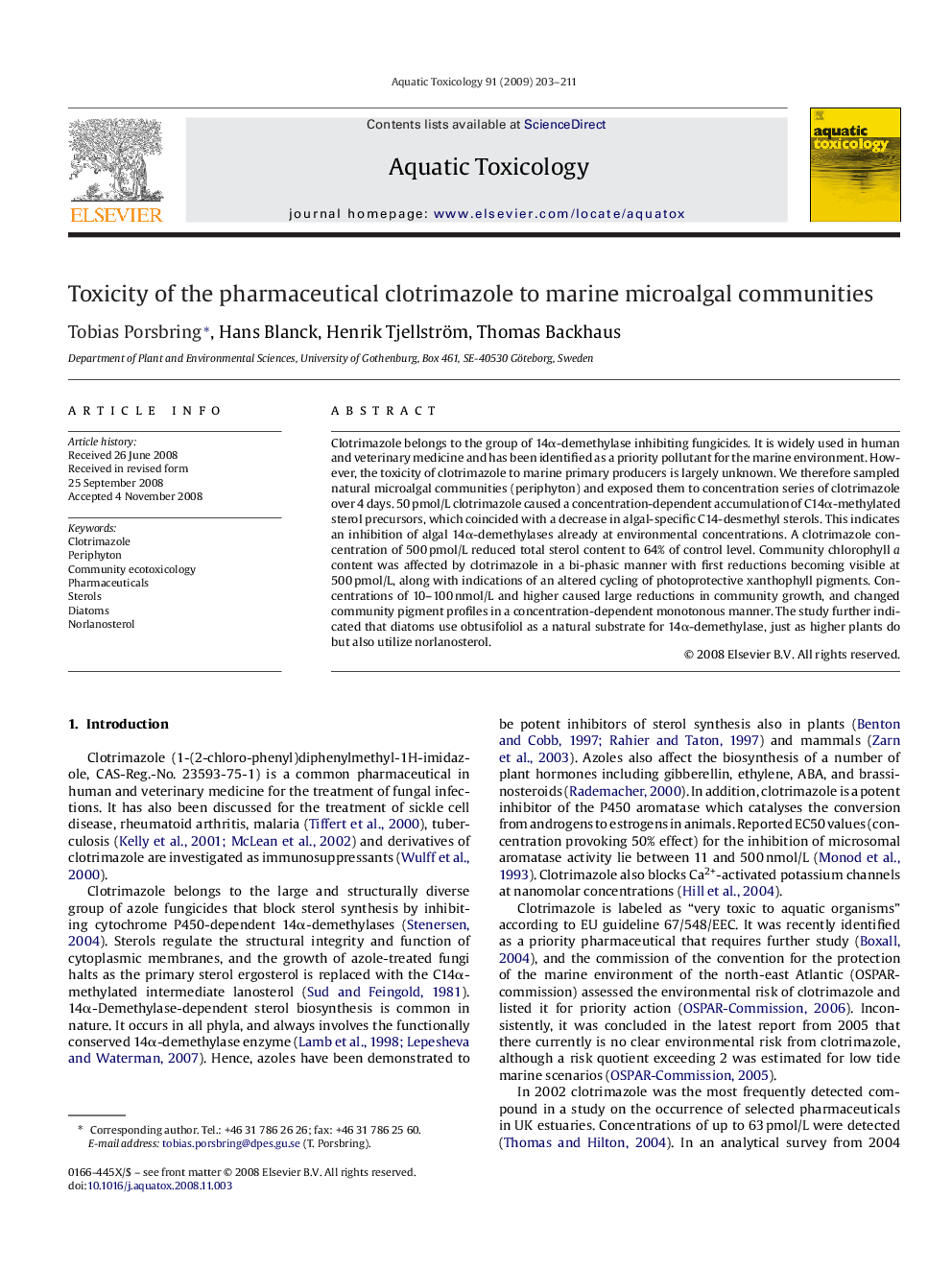| Article ID | Journal | Published Year | Pages | File Type |
|---|---|---|---|---|
| 4530700 | Aquatic Toxicology | 2009 | 9 Pages |
Clotrimazole belongs to the group of 14α-demethylase inhibiting fungicides. It is widely used in human and veterinary medicine and has been identified as a priority pollutant for the marine environment. However, the toxicity of clotrimazole to marine primary producers is largely unknown. We therefore sampled natural microalgal communities (periphyton) and exposed them to concentration series of clotrimazole over 4 days. 50 pmol/L clotrimazole caused a concentration-dependent accumulation of C14α-methylated sterol precursors, which coincided with a decrease in algal-specific C14-desmethyl sterols. This indicates an inhibition of algal 14α-demethylases already at environmental concentrations. A clotrimazole concentration of 500 pmol/L reduced total sterol content to 64% of control level. Community chlorophyll a content was affected by clotrimazole in a bi-phasic manner with first reductions becoming visible at 500 pmol/L, along with indications of an altered cycling of photoprotective xanthophyll pigments. Concentrations of 10–100 nmol/L and higher caused large reductions in community growth, and changed community pigment profiles in a concentration-dependent monotonous manner. The study further indicated that diatoms use obtusifoliol as a natural substrate for 14α-demethylase, just as higher plants do but also utilize norlanosterol.
